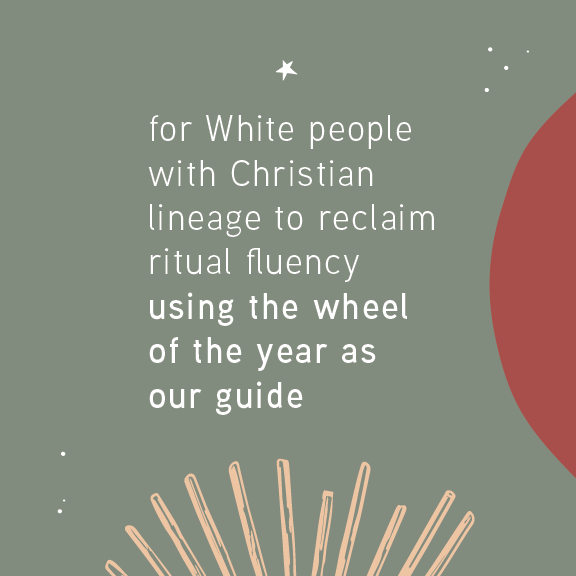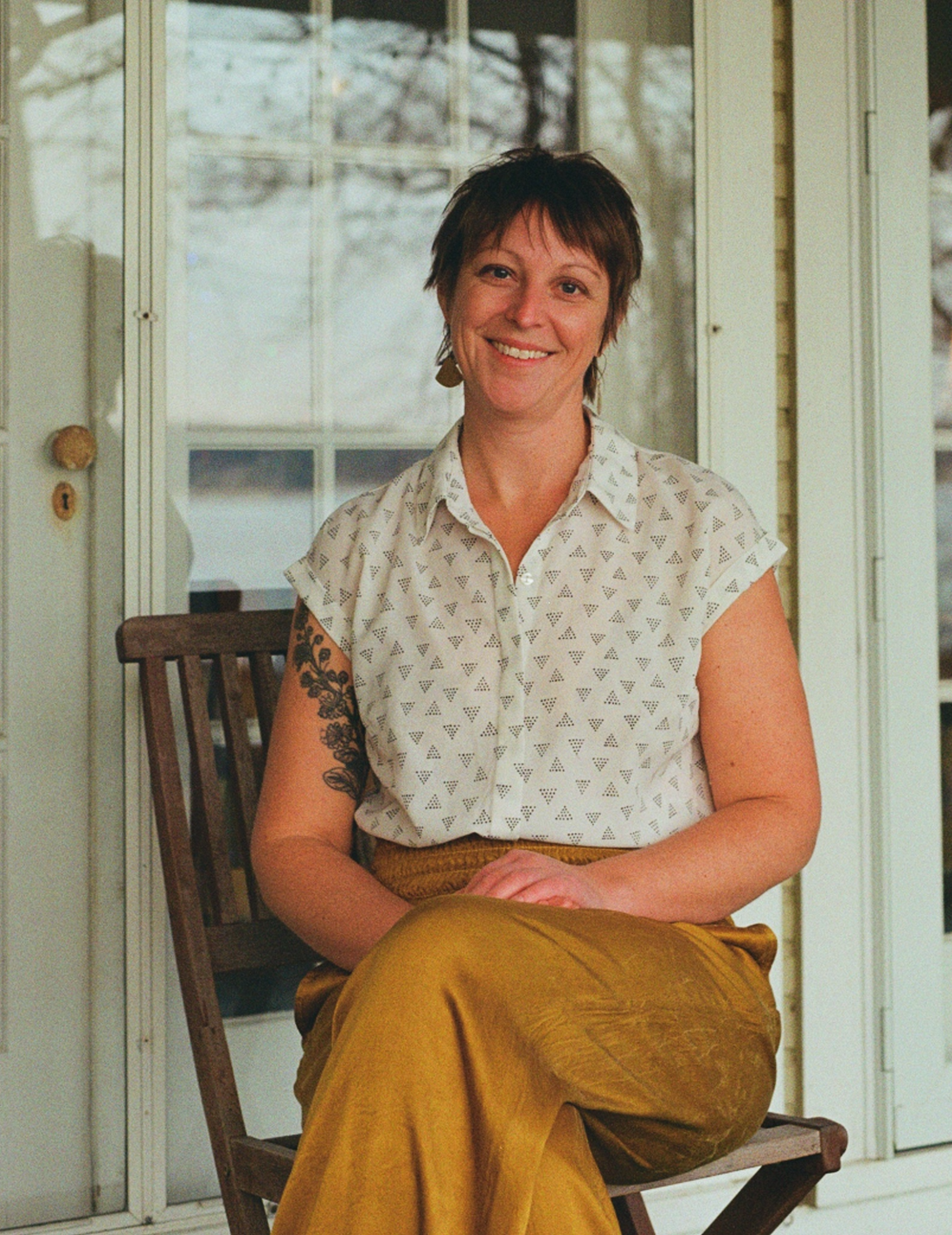What shrines have you made in your life?
What altars have held your attention and offerings?
As a kid I had a sense that altars weren’t OK. Or at least — when we create them they belong only in approved “sacred sanctuaries” like a church or temple. I was raised Presbyterian and eventually became an ordained minister in this tradition, and as I learned more about the theology of my lineage I realize my childhood spidey senses were sharp. Reformed theology doesn’t acknowledge an altar but rather a communion table at the front of the sanctuary, this is because an altar is interpreted as a place where sacrifice is made, and the theology holds that the sacrifice of Christ was perfect and need not be replicated or repeated in any way. The Reformed tradition is also one with a real lack of images and a history with very restricted visual and physical representations of the sacred. So the concepts of crafting shrines felt pretty far from my religious imagination.
As I feel for a meaningful shrine from my childhood – the most potent one that comes is a Christmas ornament we placed at the top of my family’s tree each year. We didn’t call it that of course — but that’s what it was. My parents lost my sister, Annie, as an infant before I was born. We had a silver cube ornament with her baby picture in it – which became a shrine to her life and to our collective grief of our loss.
In fact, getting to hang this ornament for the first time as a child was where I first learned how to feel grief. I remember sitting on the single step down into our sunken living room at the base of the tree and weeping with my parents. They paused and sat with my tears – blessed by my young heart’s capacity to feel this loss alongside them. The act of offering our attention at this shrine – however briefly each year — was a practice of honoring our grief and our love. It taught me to honor life – no matter how brief and painful it may have been.
Last week I took in a local art show called Shrines and Altars. The invitation of the curator was to ask: to whom are we building shrines? At what altars are we worshipping?
It was a beautiful show that evoked such provocative reflections about to what we give our attention and reverence: the self, the earth, loved ones, lost ones. But as I took in the art I couldn’t help but notice the way so many of the artists were stretching for symbols that didn’t seem to be of their ancestral lineage or spiritual practice.
One artist created a shrine to their mountain bike adventures and the artist’s statement articulates that he placed a found wooden Buddha at the center “to give it what I felt was a shrine feeling.”
Another artist interpreted the invitation to create an altar or shrine as an oil painting to honor loved ones who have passed. Her statement includes a beautiful Eskimo proverb.
There was an altar to grief that cracked open my own as I took in the tenderness of it, my eyes traced along the melted wax, driftwood beautifully placed, glass vessels for tears, the stone, and then finally landed at the bottom shelf which held what looked like braided sweetgrass (an Indigenous practice).

One artist’s last name was Grix and the piece was entitled “Grix dolls” which is a play on gris gris dolls from the Voodoo tradition, a spiritual practice developed by enslaved West African people in the Louisiana plantations.
All of these artists, as far as I could tell, were of European descent.
As I made my way through these beautiful expressions of shrines and altars – I kept longing to ask the artists what would you create if you reached for your own lineage? Your own people? What here is yours to share? I ask myself these questions too.
And then I rounded the bend and found one called: “Singing the Caribou Home” by Jan Johnson Doerfer. In the piece she is processing her grief in this shrine dedicated to “ all that has passed” and what we have lost because of climate change. She invites us to imagine the world of her ancestors, who ate herring from the sea, danced under the northern lights and sang the caribou home. My eyes glittered with the beauty and grief of it as I could feel for both my own ancestors’ loss and the loss all of our ancestors have experienced in the devastation of habitat and severance from land.
The question of the show “to whom or what are we building shrines?” is a worthy one. It invites us to ask where we give our attention. What do we worship or honor?
And — I also ask — when we build those shrines:
What are we invoking? What or who is ours to summon?
As I reflect on my own childhood spiritual tradition where I experienced a real lack of relationship to shrines and altars, it feels like I learned to worship at the altar of austerity. There are lots of costs to that. And —today— I honor the part of this that feels like a gift. In many ways, perhaps because of this austerity, the land became my primary altar – a place of reverence and relationship to Spirit. I looked outward to the beauty of the world around me for traces of Spirit.
At the same time I long for more. I long to know how my ancestors expressed their grief for starters. To reclaim the practices and gifts that are there to be received from both my Christian lineage and the pre-Christian lineage of my people for the sake of creating shrines and altars where I may lay my grief and gratitude.
I long for this not only in my personal practice, but as I bring my grief into the public square as we collectively witness genocide.
This guttural hunger was enlivened again as I watched American Jews gather on October 7th to mark one year of the genocide in Palestine. Organized by Jewish Voice for Peace people gathered at the water’s edge all across Turtle Island to share in a Tashlich ritual, a casting of stones into water during a season that invites people to reflect on ones wrongdoings and change course. Then on Yom Kippur thousands gathered in Brooklyn, NY for a mass public Yizkor ritual, a mourning ritual. Watch here to see this powerful public witness.
Not only was there a rich grief ritual tradition that people who are heavy in grief could draw upon collectively, but they brought that ritual into the public eye. They invited water and the front steps of American Imperialism to be the altar upon which they laid their grief and their resolve to continue in the struggle to end this genocide.
Whew – my yearning is so great! Where are my comrades who share in Christian lineage who will grieve in public with me? Who will experiment and learn and draw upon our ancestors ancient practices – both pre-Christian European land based ritual – but also the practices and rituals of our Christian heritage.
What does our people’s history have to offer this moment?
One powerful answer to this question came in a conversation with seminary student, Doe Hoyer, as we were preparing for Weaving New Ritual. When asked what practices they might see as blessings in their Christian lineage that they might want to pull forward in their own practice they said unequivocally: “Speaking prophetically – to distill messages and call our community to something.”
I trust this — and that there is so much more.

We have a delightful group of people starting to gather for our first ever cohort of Weaving New Ritual. Over the course of a year we will be in this kind of inquiry together, in person and online. We will be in the practice of reclaiming ritual fluency drawing upon Christian and pre-Christian lineages as we are also accountable to systems of oppression and the complicity of Christianity in them.
Will you join us in the inquiry and practice?
Registration closes November 21
learn more: www.firelightembodiment.com/weavingnewritual

Rev. Lucy A. Waechter Webb (she/her) is a politicized spiritual leader, somatic coach, mom, land-tender, ritualist, writer and organizer. She works at the intersections of spirit, embodiment and justice to support the emergence of our collective liberation. After ten years as a pastor and community organizer, she is now focused on weaving together cultural change and organizing for material change, with the body at the center. She was certified as a somatic coach through the Strozzi Institute in 2024 and was ordained as a Presbyterian minister in 2011.
She lives in rural northern Michigan and whenever possible will jump into the closest body of water. She loves the forest and laying on the earth and will sit by the campfire singing with people for hours on end.



Unbound Social